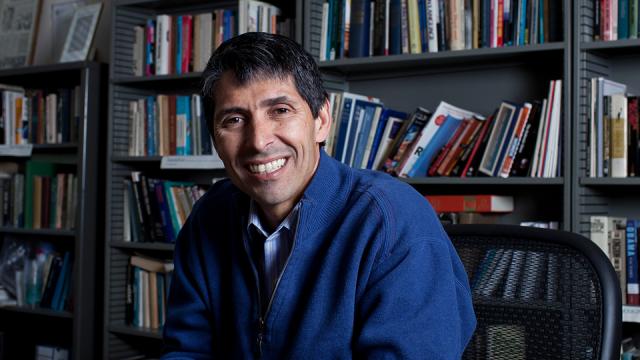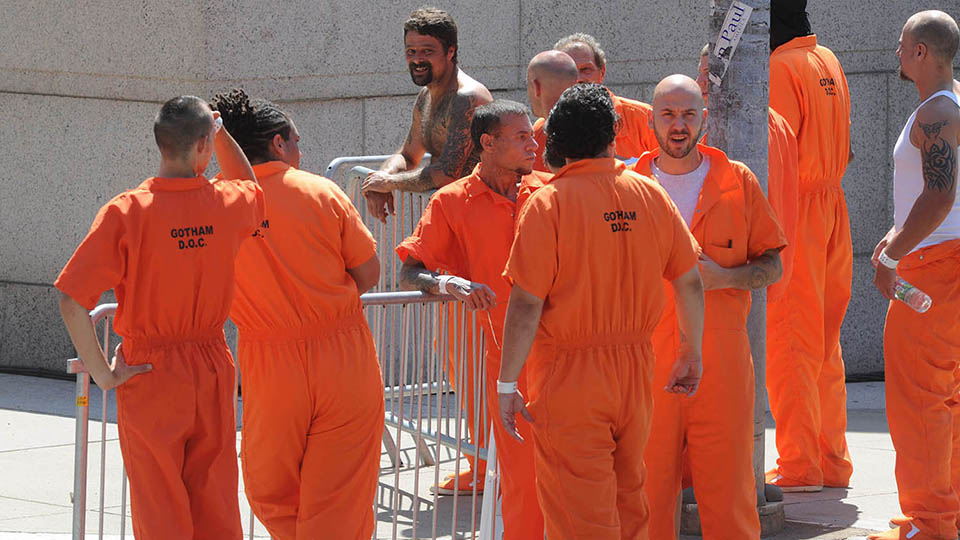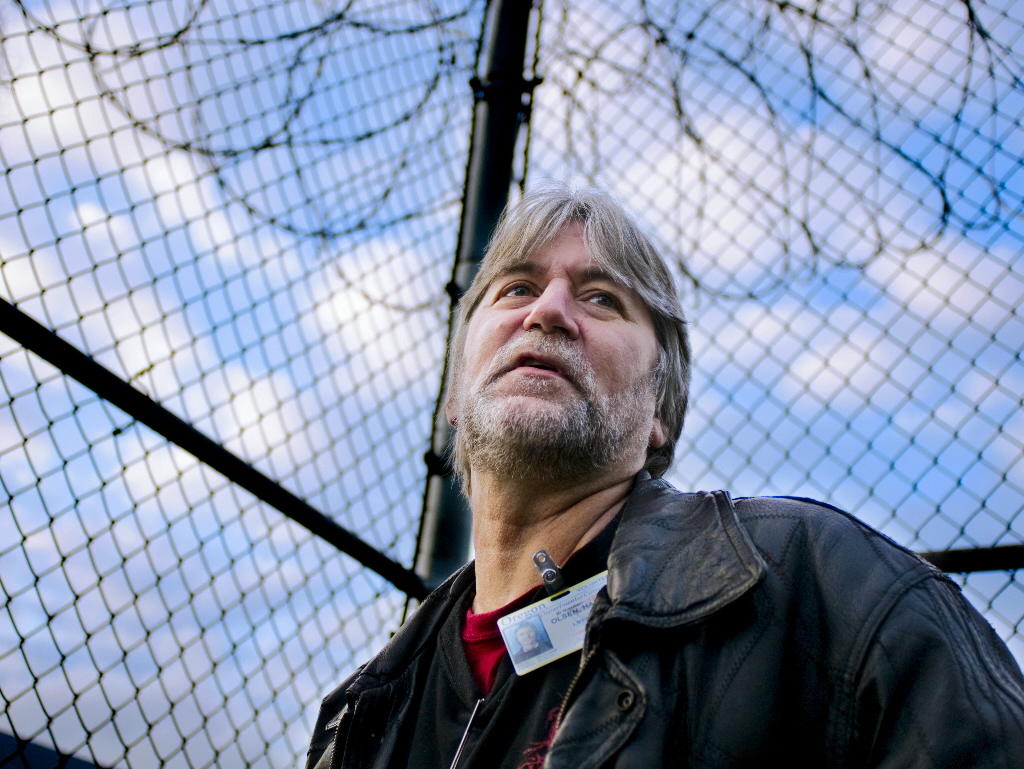
The chances that Marvin Stancil would be a free man at 42 were slim to none when he went to prison for first-degree murder at the age of 18. The likelihood that he'd be doing volunteer work in high schools when he got out, teaching young people how to handle their emotions, wasn't even a consideration.
Yet he and other ex-convict facilitators of an intervention program for at-risk youth called “Attitude When Angry & Resolving Emotional (issues non-violently),” or Project AWARE, are doing just that at public schools in San Diego County.
“I’ve been out of prison for 11 months, two weeks,” said Stancil, of San Diego. “I served 23 years, eight months of a life sentence for first-degree murder.”
Along with Reginald Washington, a childhood friend who founded Project AWARE, Stancil and a cadre of other once-incarcerated and formerly gang-affiliated lecturers are leading a program that public school educators believe could revolutionize the way the American educational system deals with students exhibiting behavior that could lead to gang activity and violence.
Shannon Hampton Garcia, an assistant principal in the Vista Unified School District, said she first found out about Project AWARE through Anthony Ceja, "the master of all things intervention" at the San Diego County Office of Education.
“I had actually gone through about five people before finally landing on Anthony's doorstep at the county office, because no one I contacted had an answer for me – no one could refer me to a quality, proven intervention program for at-risk kids,” said Garcia.
Since then, Garcia has become so convinced of Project AWARE’s efficacy that she made the program the focal point of her doctoral thesis. Now, she said, it seems that everyone else around her wants to get their kids involved.
“Last year I even had to referee a battle between two opposing parents who wanted their kids in the program, but whose kids couldn't be in the same room due to a court order,” she said. “We solved [it] this year by doubling our number of groups, and the wonderful thing is we are now not just using it for intervention – we now have the space to use it for prevention as well.”
By expanding Project AWARE at her school, Rancho Buena Vista High, Garcia and other faculty and staff say they can offer spots to youths who show the earliest signs of a crisis.
“If a kid is showing signs of stress or trauma, we give them the option of trying the program, just to give them some support with the option to stay,” said Garcia, noting that “99% of the time, the student ends up staying."
At first glance, one might be tempted to think of Project AWARE as a modern incarnation of the once venerated, now largely discredited “Scared Straight” movement of the late 1970s and early 1980s. That program purported to do just what its name implied: scare troubled youth into good living by exposing them to profanity-spewing, threatening prison inmates.
By contrast, Project AWARE does not bring kids to prisons. Some of its participant facilitators, however, were involved in a program held at prisons called Convicts Reach Out to People, or CROP – though it was never the “in-your-face” shock-fest that Scared Straight became.
Project AWARE and CROP are both more nuanced and multi-layered in their approaches, say proponents. And the improvement in results through a more sophisticated use of inmates and former inmates working with at-risk and troubled youth is immense, says Garcia.
“The kids in the program do change for the better,” she said. “They know we are going to bat for them, that we aren't going to kick them out of school as long as they are making progress and attending their intervention with fidelity.”
When students are known to suffer from substance abuse, another layer is added to their Project AWARE regime.
“(We) throw in an Alcoholics Anonymous, Narcotics Anonymous or Marijuana Anonymous contract with required numbers of meetings to attend,” Garcia added, "and as long as our kids are doing their best to suit up and show up, we support their recovery, which we know can be long and arduous.”
Most of Project AWARE’s facilitators are ex-cons and parolees, like Marvin Stancil who spent 24 years locked up.
On the night of March 17, 1989, a day after his 18th birthday, Stancil fired into a car killing 17-year-old Dimetrius Wallace with a bullet to the head. “It was a drive-by shooting between two opposing gangs,” Stancil said. “It took me nine years to realize the gravity of what I had done…that I had killed a young man, and that it was no one’s fault but my own.”
“Years later I found something very disturbing out,” Stancil recalled. “My auntie was best friends with his mother, and on occasions when we were younger—six or seven—we played together, went to the zoo together, went to Sea World together. His name was Dimetrius Wallace.”
Stancil shares the pain of that process, and the years that came after, with students in Project AWARE. Prior to his ninth year in the California state prison system, Stancil said he was angry every day. He blamed other people and society for his incarceration. Yet something never felt right about his “mad-at-the-world,” “victim-of-society” inner monologue.
“I came from a two-parent, well-to-do family,” Stancil recalled. “I wasn’t poor. My younger sister, who is my only sibling, went on to college. I could have, too. My parents owned a business. I had opportunities.”
But, as he recalled, in the late 1980s things were different in the Skyline neighborhood of San Diego where he grew up.
“Being in a gang was…well, it was just the next thing to do. I wasn’t jumped in. I wasn’t forced in," he said. Urban neighborhoods were rougher and more neglected then than they are today, he added.
“We used to have people just standing around and hanging out on just about every street corner with nothing going on positive in their lives. I see nobody with time to ‘just hang out’ on street corners now. And it’s not just less graffiti – I see no graffiti in my neighborhood. The community where I grew up is beautiful now compared to when I went into prison.”
The Psychological Break
The big change Stancil went through in his ninth year in prison, which shifted his future outlook, was the result of something his late grandmother told him. She was suffering from dementia and wanted to see her grandson before she died, so she visited him in prison.
“I told my grandma that I had a head with no screws in it,” Stancil recalled, holding back tears during our interview at a coffee house in San Diego’s Hillcrest neighborhood. “I thought I was being funny by quoting Tupac. She looked me in the eyes and said, ‘Baby, I’m glad you said that because I know you’re not locked into the way you are thinking now.’ That got me thinking. It got me to look at myself."
A process began for Stancil in which he suddenly began to see others, whom he had always blamed for his woes, as victims of his behavior rather than the other way around. Then, 16 years into his life sentence, Stancil had another awakening.
“There was a pilot program,” he recalled, and “I was allowed to start taking community college courses.” The act of learning accelerated Stancil’s urge to know more about himself and the events that landed him in permanent lockdown. He didn’t like what he saw when he looked deeper within, said Stancil, so he decided to begin to change.
“By the time I went before parole board, I did something unprecedented,” he said. “I presented a portfolio of my life before and in prison.”
The parole board official told Stancil he'd intended to reject him outright for parole. But Stancil's self-effacing presentation, and his portfolio, made an impression. He was given a five-year parole review — an outcome vastly better than outright rejection. Still, it meant at least five more years behind bars.
“The parole official said, ‘I don’t think you’re quite ready,’” Stancil recalled. “I understood his position, and that was okay with me.”
But two years later, due to a technicality regarding the parole board's decision – which was discovered by one of Stancil's fellow inmates who had studied law – Stancil found himself a free man.
Stancil reconnected with Reginald Washington, a childhood friend who had also been recently released from prison and parole after serving time for attempted murder. Washington told Stancil about a program he'd started: Project AWARE. He told Stancil that if he had interest in doing some “repairing of the community he had hurt” as a youth, Project AWARE needed him.
“Interested in repairing the community?” an emphatic Stancil asked rhetorically. “I said, ‘I’m in.’ That’s not only what I wanted to do: I needed to do it. I need to make things as close to right as I can go toward fixing things — to offer some kind of closure to the family of my victim, to my community and even to myself.
"What’s the saying? To every purpose there is a season. I don’t believe in coincidences. I believe things happen for a reason.”
Together with other Project AWARE facilitators, Washington and Stancil are now helping high schools teach young students about something they call “emotional literacy.”
“It’s a term — like other ‘literacy’ issues — that I borrowed and adapted to Project AWARE,” Washington told Occupy.com. “I know that I suffered from it, and that there is still a lack of emotional intelligence with young individuals, be they male or female, black, Hispanic or white. It’s not the same as traditional intelligence and literacy. You can be smarter than anyone else around you and still suffer from a lack of emotional skills.”
That condition, said Washington, often leads to violence as a solution to anger. In fact, as he pointed out, when violence is the only response to anger that a youth knows, the potential outcomes include death and prison.
“If I can help even one kid stay alive and out of prison, then at least I’ve done one good thing in life,” he said.
According to Vista Unified's Garcia, there’s been a lack of work and research in the area of emotional literacy as education policy makers have made national testing standards their primary focus. Ironically, she said, it's taken ex-convicts turning on the light in education circles regarding an emerging component of behavior modification in and around high school classrooms.
“Emotional literacy, in my opinion, should be part of our national standards,” Garcia said. “But we're so worried about falling behind academically, that academics remain our primary focus. It's a shame because there is so much more to our children. Fortunately, our district recognizes this and our new board goals do include ‘improving behavior.’”
“Talk about innovative – I've never seen this before," added Garcia, who is in a doctoral program for organizational leadership. "How we approach our students through our work in Project AWARE... has made me incredibly proud of Vista Unified School District."
Specifically, said Washington, the project helps students learn to deal with anger without resorting to violence. “Kids are seeking an identity,” he explained. “They are seeking to be a part of something. Gangs can be attractive to angry, young individuals. But they just don’t realize how horrific and traumatizing being in a gang is. We found out once we were involved in it. We felt it.”
Part of what Washington, Stancil and other Project AWARE participants have experienced is the pain of regret, guilt and the terror of life in prison — not to mention the memories of what got them there. Sharing those feelings with teens in an intimate, vulnerable and honest way puts the teaching of the program in practice.
“I am 47 now,” said Washington, who served time in Folsom, Donovan and other prisons in California. “I went in at 24, got out at 40 and wouldn’t wish what I went through as a gang member and as a prison inmate on my worst enemy.”
According to Garcia's research, there were 300,000 people incarcerated in America's jails and prisons in 1972, versus 2.5 million people stuck there today.
“Right now, the U. S. has the highest rate of incarceration on the planet,” she said. “Mass incarceration has fundamentally changed our world, and research shows us that incarceration ‘habits’ begin at an early age. In fact, if a youth is incarcerated before the age of 18, their chance of starting a lifetime of imprisonment increases exponentially.”
Further, Garcia pointed out that 70% of the 2.5 million people imprisoned in America today are high school dropouts. “Teaching them how to process anger without acting violently can make the difference in keeping them in school,” she said.
Having faith that people can change their attitude is key, she added, especially with students who have shown a proclivity to act violently or have problems like substance abuse, and who are at risk of gang affiliation, according to Garcia.
And for the ex-convicts who are trying to "make things right,” Project AWARE has changed everything. Now, at least in one affluent southern California school district, top educators are becoming believers in the process.
"They say that a leopard can't change its spots,” Vista Unified School District's Dr. Barbara Benavidez recently said of the program. “But with Project AWARE, I'm seeing the impossible: Leopards are changing their spots."
Project AWARE currently only operates in San Diego County. But the group hopes to expand into other districts and counties in the state.
“I think there us potential for us to grow beyond that,” Washington said. “For now, though, we’re just really focused on doing the best job we can here in the San Diego area.”
3 WAYS TO SHOW YOUR SUPPORT
- Log in to post comments














